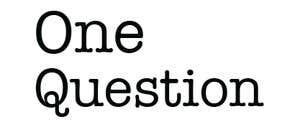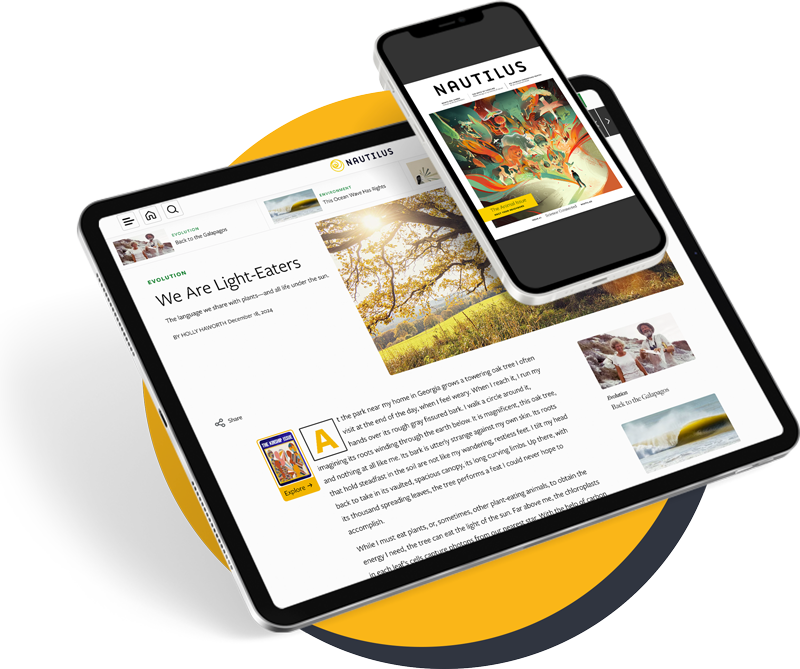It’s quite distracting to fall in love while studying physics. I speak from experience. I’m not talking about an esoteric passion for equations or a metaphorical obsession with nature’s laws (although I’ve experienced those, too). I’m talking about real, dizzying, wonderful, human romance. The kind that makes you want to throw your physics books away (almost) and sing songs about birds chirping and flowers blooming while walking hand in hand.
Luckily for my career, he was a fellow graduate student in physics, and ours was a romance filled with debates about quantum physics, as we skipped classes and ignored research projects in favor of bike rides and nature hikes, concerts and movies. Spacetime had obviously warped to bring us together. On the eve of the new millennium, we resolved to greet the 21st century as partners for life.
Our wedding was a joyous and nerdy affair, celebrated by our two families as well as our common physics family of fellow students, staff, and faculty. The wedding invitations included quotes from physicists, and many bad physics jokes were shared and hooted down at the reception. In our very own “Gift of the Physics Magi” moment, our thesis supervisors asked us what gift we would like to mark the occasion. I requested a beautiful bound copy of Feynman’s Lectures in Physics for my fiancé, not knowing that he had done the same for me.
As we settled into married life, my Ph.D. research in the nascent field of quantum information science progressed rapidly. I was very lucky to be working in a new area where every question I explored yielded exciting results (something that is rather unusual in most other physics research fields). I particularly enjoyed studying quantum entanglement—nature’s peculiar version of bonding between microscopic particles. Somehow, I could relate to the connection between the entangled pairs I was studying.
Before I knew it, three years zoomed by, and I successfully completed and defended my dissertation. I was offered a dream postdoctoral research position, but it would require moving over 9,000 miles away from my partner. Spacetime was warping the other way and pulling us apart.
I was far from the first woman to have to choose between career and family. But in our case, there was the added wrinkle that both of us were seeking academic careers in physics, which severely limited our options. This challenge is common enough in the academic world that it has its own nickname borrowed from a well-known problem in physics—the “two-body problem.”
History is filled with women who faced similar dilemmas, and more often than not, physics lost.
Take the case of Harriet Brooks—Canada’s first woman nuclear physicist. Within a span of six years between 1898 and 1904, Brooks discovered the element radon, measured its half-life, kickstarted the understanding of radioactive transmutation of elements, discovered the radioactive recoil effect, and pointed out the multiple stages of radioactive decay. Along the way, she had become the first woman to obtain a graduate degree at McGill University, and the first woman to work with two future Nobel Prize winners. She had proved her skills at three renowned academic institutions, and she had published a paper on her own in Nature.
I was far from the first woman to have to choose between career and family.
Yet she had to abandon her faculty position at Barnard College after announcing her engagement. Barnard, founded in 1889 in response to Columbia University’s policy of not admitting women students, insisted that she resign. Her advisor, the Nobel Laureate Ernest Rutherford, recognized her brilliance, describing her as another Marie Curie, but it wasn’t enough to save her career.
Harriet Brooks is not the only woman that physics has lost to the gender variable.
Lucy Mensing, who performed groundbreaking research in the emerging field of quantum mechanics, ended her physics career in 1930 after the birth of her first son. In Australia, Ruby Payne Scott blazed a trail in radio astronomy and later chose to start a family, but without any option for maternity leave, she gave up her career.
In England, Muriel Barker graduated from Cambridge in 1915 (although as a woman she did not officially receive a Cambridge degree). She then continued her graduate studies in aeronautics at Cambridge. In 1922, she published new insights about the velocity of wind flowing through a narrow bar, but the same year, she hit the “marriage bar”—a common policy in the United Kingdom that prevented married women from continuing to work.
Who knows how many more women disappeared from the physics universe? All over the world, the marriage bar swept through the ranks of women scientists, removing every trace of them from the scientific record.
I often hear the claim that physics is an objective science in which there is no room for discussions about gender and identity. After all, the equations used in physics are gender neutral. In Newton’s famous equation F = ma, the variable F stands for force, not female. And yet this objective field is full of very subjective human bias. Harriet Brooks’ gender certainly mattered in the choices she was faced with. There was no middle ground for her. It was physics or family. Physics was the worse for it.
Over the years, her decision led to her name fading from the historical record. Friedrich Dorn got the credit for the discovery of radon (in reality, his paper said little about its nature, while it was Brooks and Rutherford who first identified it as a new gas). Of Marie Curie and Harriet Brooks, history remembers only Curie.
As for my own choice of physics versus family, I was no Curie-like exception. Choosing to follow my research dreams to Australia meant putting physics ahead of family, and I could not do that. On the other hand, I refused to yield to the marriage bar. Crucially, I did have one thing in common with Curie—a supportive partner. The two of us made a pact, our personal solution to the two-body problem. We would face the marriage bar equally. We would never put our individual academic careers ahead of our joint personal lives. So, Australia was out.
A few years later, an equally attractive research opportunity arose for my partner in Europe. That too was nixed. We knew, of course, that our solution to the two-body problem could not work forever. The real solution would be for academic institutions to accommodate couples with new “marriage support” policies rather than “marriage bar” policies. But almost no such policies exist, even today.
Eventually, our meandering career paths and valiant efforts to balance family and academics came to a head. We never did find a dual solution to the two-body problem. We were forced to face the marriage bar. I embarked on an academic career as a freshly minted physics professor. My partner chose to leave physics.
I often wonder what I would say to Harriet Brooks if I had the privilege of meeting her. I would have a thousand questions for her, of course, but what would I tell her about me? I would want to describe my physics research, I’m sure. But I would also very much want her to meet the man who curved spacetime for me. He carved himself a new niche in the continuum in a sparkling new career, and he found a way to fit us both in. And he never looked back. He and Harriet would have a lot to talk about. ![]()
This excerpt is reprinted with permission from MIT Press Reader. It is adapted from Her Space, Her Time.
Lead image: mnaufal design / Shutterstock
































